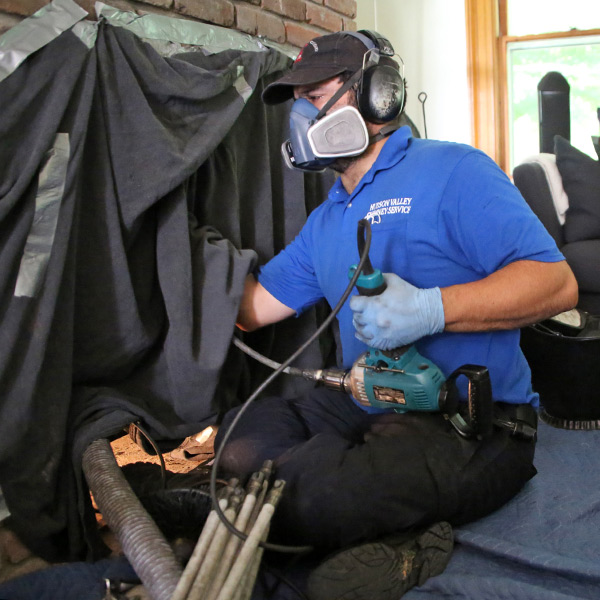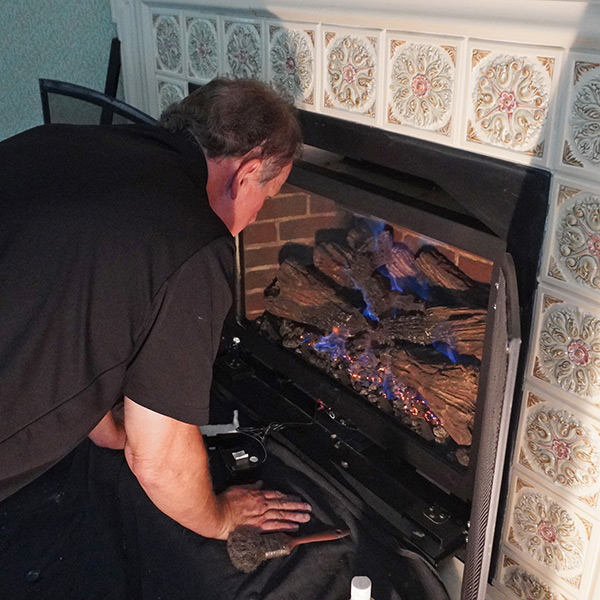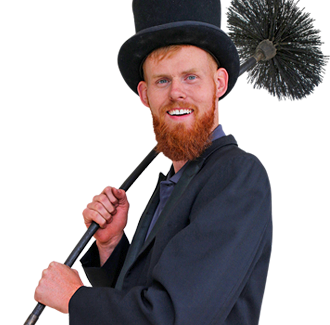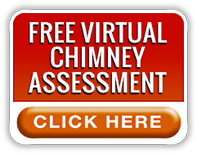Things You Should Know About Fireplaces
For many homeowners throughout the Hudson Valley, nothing makes a home feel warm or inviting than a stunning fireplace. During the winter months, when the grounds are covered in a white blanket, the crackling flames is keeping everyone warm and cozy inside. Here are a few things homeowners should know about gas and wood-burning fireplaces, starting with annual fireplace maintenance.

Hire a Chimney Sweep
Every home with a wood or gas fireplace needs a chimney sweep. According to the National Fire Protection Association (NFPA), annual chimney inspections are necessary to ensure your chimney, vents, and attached heating appliances are not a health or safety risk due to creosote, obstructions, or structural issues. Every winter, more than 40,000 homes are damaged due to fire. Excessive creosote in the chimney was cited as the primary reason in most incidents. When you maintain your annual chimney inspections, you not only reduce the risk of fire and carbon monoxide exposure, but the chimney sweep can often spot minor issues before they become extensive repairs. Your chimney sweep will also let you know if chimney cleaning is necessary.
Clean the Firebox
Many experts recommend homeowners clean the firebox at least monthly in the winter while using the fireplace. When the ash piles up in the firebox, the additional moisture dampens the flames reducing heating efficiency. It can also damage the grate. Allow your fireplace to cool for 24 hours. Then, use a shovel to scoop the ash into a metal container. Be careful; the ash may still be warm. Next, vacuum or sweep the remaining debris and clean the grate. You can also fill a spray bottle with distilled water and a small amount of vinegar and use a bristled brush to clean the walls inside the firebox and the glass doors. When the firebox is dry, spread an inch of ash from the metal container on the firebox floor and replace the grate. It will help to start and maintain your next fire.
Use Seasoned Firewood
The type of firewood you use can impact the heating efficiency and cleaning frequency of your fireplace. For best results, only burn “seasoned wood” that has been dried for six to twelve months. It has a significantly lower moisture content, so your logs will burn hotter and longer with less smoke and creosote residue.
Don’t Burn Your Christmas Tree in the Fireplace
Experts warn homeowners never to burn a Christmas Tree in the fireplace or heating stove. The sap in the fresh wood and volatile organic compounds in the needles are hazardous and can cause a chimney fire. It also produces a high amount of creosote and pollutes the chimney and fireplace, requiring extensive cleaning before you can use the fireplace again.
Extinguish the Fireplace Before Going to Bed
To reduce the risk of fire and carbon monoxide poisoning, you should always extinguish the fireplace before going to bed or leaving your home. Use the poker to spread the ashes, embers, and unburnt wood particles. Scoop the ashes with a shovel and put them on top of the embers and wood. Then pour baking soda or sand to extinguish the fire. When the fire is completely out, and there is no smoke, it is safe to close the damper.
 Consider Installing a Fireplace Insert
Consider Installing a Fireplace Insert
Fireplace inserts are self-contained heating appliances that fit directly inside the opening of a masonry fireplace. A fireplace insert captures the heat that would typically go up the chimney, dramatically increasing the warmth of your living space while reducing energy costs. They are available in your choice of fuel options such as wood and gas.








